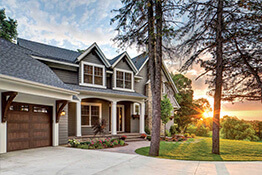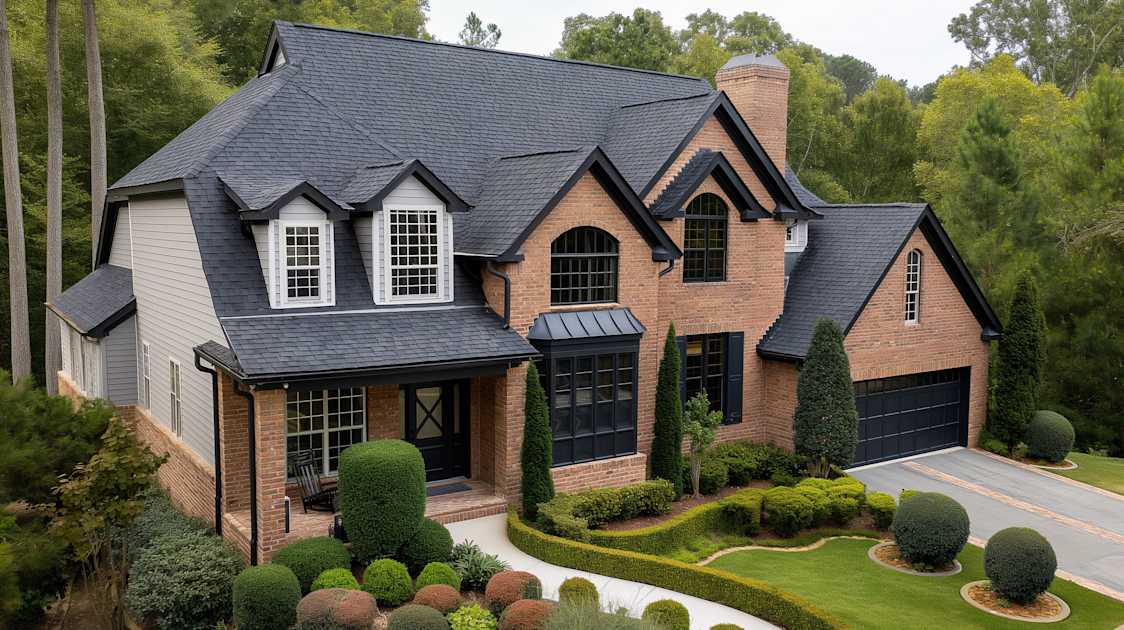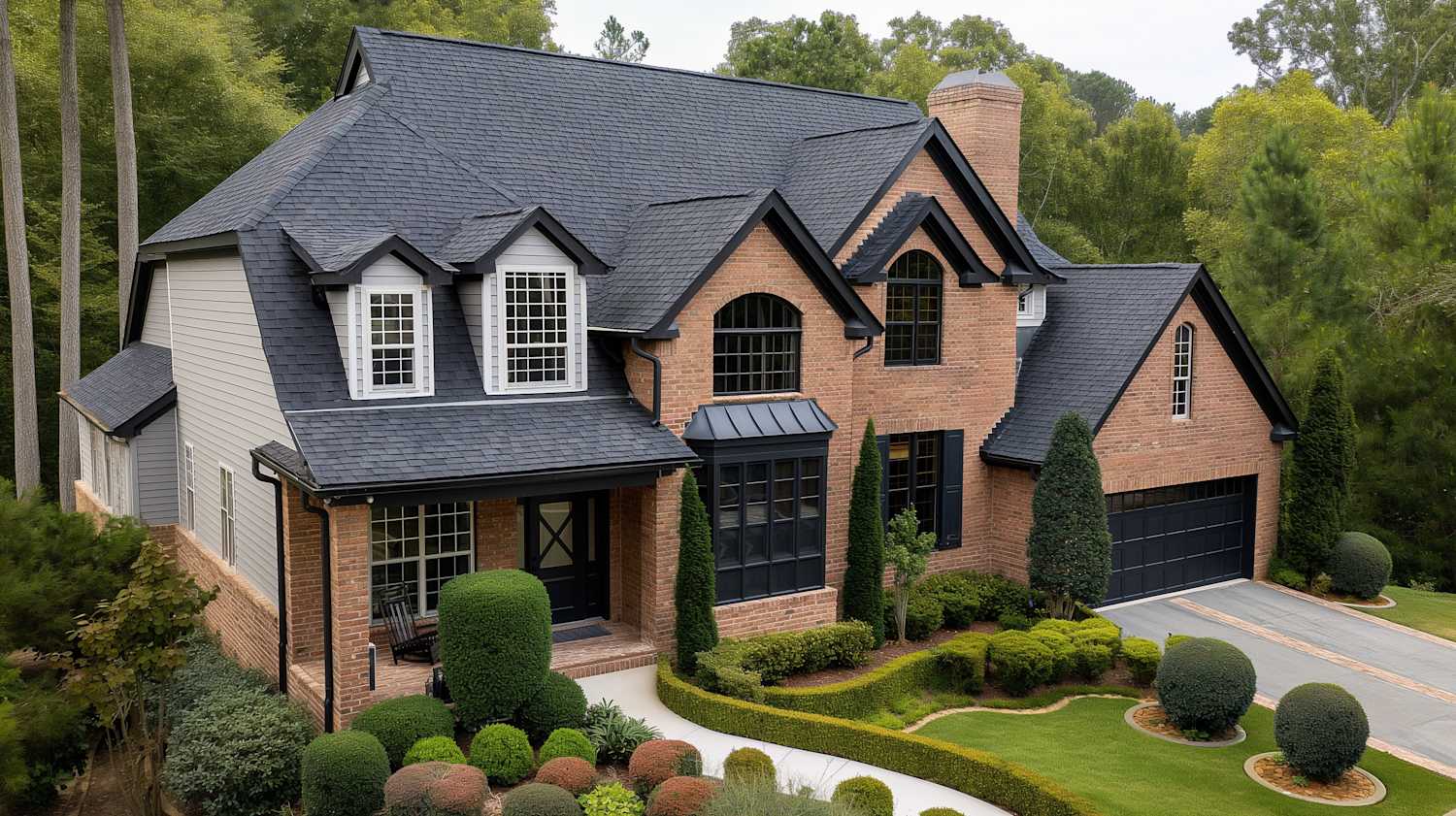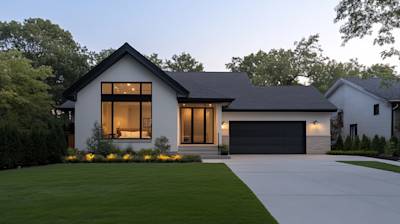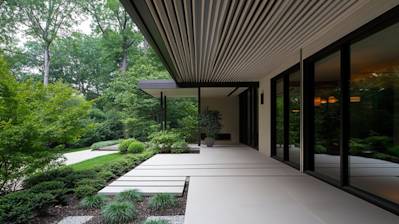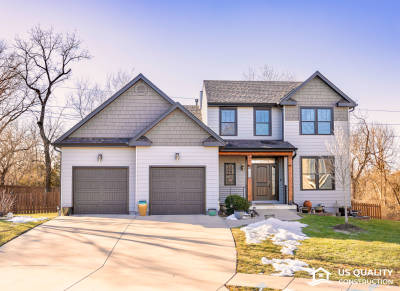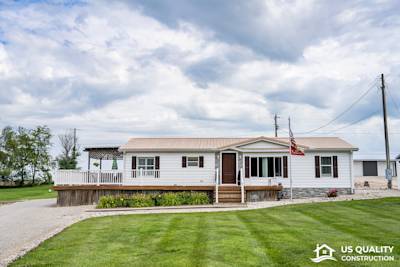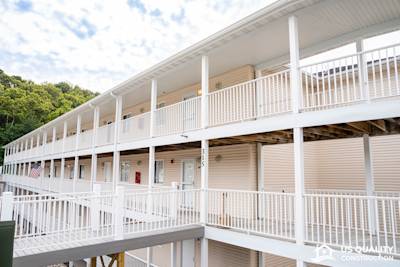Architectural shingles, also known as dimensional or laminated shingles, are high-quality roofing shingles that add a distinctive, sophisticated look to homes and buildings while offering a range of benefits for both the property owner and the environment. By enhancing curb appeal, building resilience and minimizing environmental impact in ways that few other roofing materials can match, these kind of shingles have become a popular choice for homeowners and architects alike.
What are Architectural Shingles?
Architectural shingles are a premium type of asphalt shingles that are double- or multi-layered, providing a beautiful, 3D look to roofs. They are heavier and larger than the traditional 3-tab asphalt shingles and are more durable. Architectural shingles typically have several layers of high-quality asphalt, combined with a fiberglass mat base for additional strength and longevity.
Features of Architectural Shingles
-
Appearance: Architectural shingles are named for their elaborate, architectural appearance. They come in a range of colors and textures, are thicker than traditional shingles, and their multi-dimensional appearance can simulate the look of cedar shake or slate roofs.
-
Durability: Because architectural shingles are thicker and have multiple layers, they tend to be more durable. They can withstand extreme weather conditions and have longer warranties, generally in the range of 30 to 50 years.
-
Installation: Architectural shingles are larger than 3-tab shingles, but their installation process is similar. However, because of their added weight and thickness, they require a stronger roof structure for support.
Varieties of Architectural Shingles
Architectural shingles are available in a myriad of colors, textures, and styles, and are typically categorized by their appearance. The two common types are:
-
Wood Shake-Style Shingles: They emulate the aesthetics of real wood shakes but with fewer maintenance requirements and more resistance to fire and weather damage.
-
Slate-Style shingles: These mimic the look of natural slate roofing. They offer great durability and beauty, but at a lower cost compared to actual slate.
Materials Used in Architectural Shingles
Architectural shingles comprise of different types of materials. They typically include a fiberglass mat base over which multiple layers of water-resistant asphalt are coated. On top of this, ceramic coated mineral granules are embedded to provide protection from the UV rays.
Asphalt
Asphalt provides the water-resistant property to the shingles. While the quality of asphalt may vary among manufacturers, those with a higher asphalt content usually offer better protection and durability.
Fiberglass
The use of fiberglass in architectural shingles contributes to their durability and strength, providing stability and resistance against tearing.
Ceramic Coated Mineral Granules
These granules provide an extra layer of protection against the weather and UV rays. They also add color and texture, enhancing the overall aesthetics of the shingles.
Installation and Maintenance of Architectural Shingles
The installation process of architectural shingles is more complicated than that of traditional asphalt shingles due to their size and weight. They must be installed by a professional roofer and in most cases will require more materials and labor, hence a higher installation cost. However, their increased lifespan and durability tend to make up for the higher upfront costs over the long run.
The maintenance and care of architectural shingles primarily involve periodic inspection, particularly after extreme weather conditions, and cleaning to prevent buildup of moss or algae.
Environmentally Friendly Aspect of Architectural Shingles
As a roofing option, architectural shingles offer several environmentally friendly benefits. They are energy-efficient, as their thickness provides better insulation, reducing cooling costs during summer and heating costs in winter. Most architectural shingles are made from recycled materials, reducing waste and promoting sustainability. Plus, at the end of their life cycle, they can be recycled, diverting waste from landfills.
Architectural shingles, with their superior aesthetics, durability and environmental benefits, are an excellent choice for homeowners and building professionals seeking an attractive, long-lasting, and green roofing solution. Their high upfront costs are offset by longer lifespan, low maintenance, and energy savings, providing a great return on investment for property owners.
Frequently Asked Questions About Architectural Shingles
What are the main features of architectural shingles?
Architectural shingles, also known as dimensional or laminated shingles, have a distinct look compared to the typical 3-tab shingles. They have a layered design resembling the natural appearance of wood or slate. This design makes them the go-to choice for homeowners aiming for a fresh but classical appeal. They provide a dimensional aesthetic to any roofing project, and their thickness can withstand extreme weather conditions better than the standard 3-tab shingles.
How long does it take to install architectural shingles?
Time frames for the installation of architectural shingles vary. Many factors impact the duration of installation, including the size of the roof, the slope, weather conditions, and the contractor's team size and expertise. An average-size home may take a couple of days to a week to install these shingles. It is always best to consult with a professional to get a more accurate timeline.
What's the average cost of architectural shingles?
When it comes to the cost of architectural shingles, there is a spectrum. It is usually more expensive than 3-tab shingles, primarily due to their durability and superior aesthetics. The cost will also depend on the brand you opt to use, the area you live in, and the installation labor cost. A roofing specialist can provide a better estimate based on your specific home and roof conditions.
Are architectural shingles more durable than other types?
Yes, architectural shingles are more durable than most types of roofing materials, including the standard 3-tab asphalt shingles. Their thickness and layered structure give them extra strength against wind and impact. Architectural shingles often come with a longer warranty period due to their enhanced durability.
Can I install architectural shingles myself?
While it's possible to install architectural shingles yourself, it's recommended to hire a professional roofer to ensure proper installation. Incorrect installation could lead to various issues like leaks, premature degradation, and voided warranty. A professional roofer has the right skills and equipment to safely and effectively install your architectural shingles.
What color options are available for architectural shingles?
Architectural shingles come in a wide range of colors and shades, from earthy tones like brown, tan, and gray to more unique options like blue, green, or red. This wide array of color options allows homeowners to choose the perfect match for their exterior design aesthetic.
Can architectural shingles be recycled?
Yes, architectural shingles can be recycled. Despite the common misconception, asphalt shingles can be a valuable resource when recycled, contributing to new road development. This provides a sustainable option for homeowners looking for an environmentally-friendly roofing solution.
Do architectural shingles increase home value?
Investing in architectural shingles can positively impact your home's value. Due to their attractive appearance and durability, they are highly sought after by potential homebuyers. In addition, architectural shingles can enhance your home's curb appeal, making it more appealing in a competitive real estate market.
Are architectural shingles suitable for any roof design?
Architectural shingles are extremely versatile and can complement virtually any roof design. However, they are ideal for steeper roofs as the slope showcases the shingles' dimensional appearance more effectively. Always consult with a professional roofer for the best advice tailored to your specific roof design and structure.
Do architectural shingles require special maintenance?
While architectural shingles are more durable, they require similar maintenance to other roofing materials. Regular washing, removing debris, and inspection for damage can help prolong their lifespan. It's best to consult with a roofing professional about specific maintenance practices for your particular type and brand of architectural shingles.
Pros and Cons of Architectural Shingles
Pros of Architectural Shingles
1. Aesthetic Appeal
One of the biggest advantages of architectural shingles is their appealing aesthetic quality. They add a three-dimensional, architectural depth in comparison to regular shingles, thereby enhancing the overall look of the roof. They are available in a variety of shapes, sizes, and colors, allowing homeowners to choose a style that complements the existing architecture of their homes, thereby boosting curb appeal.
2. Durability
- Architectural shingles boast a higher level of durability compared to their traditional counterparts. They have a second layer fused onto the base shingle, which doubles the thickness of the material.
- They are less prone to curling and warping due to heat, aging or extreme weather conditions.
- Furthermore, architectural shingles are often manufactured with higher quality, more resistant materials that contribute to longer lifespan.
3. Wind Resistance
Architectural shingles are heavier than traditional 3-tab shingles, which means they can handle stronger winds. Many brands of architectural shingles are rated to resist winds up to 120 mph compared to traditional shingles which usually withstand speed up to 60-80 mph.
4. Ease of Installation
Although architectural shingles are heavier, they are often easier to install than traditional shingles. This is because they don’t require perfect alignment and are more forgiving of minor mistakes.
5. Excellent Warranty
Manufacturers usually provide longer warranties on architectural shingles due to their durability and resistance to damage. These warranties can be as long as 50 years or even lifetime in some cases.
Cons of Architectural Shingles
1. Cost
- The primary downside of architectural shingles is their cost. They are significantly more expensive than traditional 3-tab shingles. This extra cost extends to the installation as well, since they are heavier and require more labor.
- Even though these shingles often last longer, the initial expense might not be feasible for some homeowners.
2. Weight
The extra layer that gives architectural shingles their strength and durability also adds to their weight. This means the supporting structure of the roof will need to be strong enough to handle the additional weight. If not, reinforcing or modifying the roof structure may be required, adding to the total project cost.
3. Variation in Color and Appearance Over Time
While architectural shingles are available in a wide variety of colors and designs, they may experience slight color variations due to exposure to harsh weather conditions, particularly in areas exposed to constant sunlight. UV radiation can cause these shingles to gradually fade over time.
4. Not Ideal for Flat Roofs
Architectural shingles are not the best choice for flat or low slope roofs. They require a certain level of slope for proper installation and drainage.
In conclusion, while architectural shingles come with a higher initial cost, their aesthetic appeal, durability and ease of installation may make them a worthwhile investment for many homeowners. However, considerations must be made for their higher weight and how it impacts the roof’s structure, as well as their suitability for different roof slopes.
Summary
Architectural shingles have become a popular choice for many homeowners due to their durability and aesthetic appeal. These shingles are not only designed to withstand severe weather conditions but also give your house a distinctive, layered look. Therefore, when considering a roof replacement or building a new home, architectural shingles should definitely be an option to consider due to their high performance and trendy appearance.
Architecture is not just about the structure but the overall look of the property too. With architectural shingles, you get a more three-dimensional look, making your home stand out and elevating its curb appeal. This is not just advantageous for personal satisfaction, it's also going to boost your house's market value. So, not only do you get a sturdy, long-lasting roofing material, you're also making a smart investment when you choose architectural shingles.
Maintenance can be a concern when it comes to home improvements, but that's another area where architectural shingles shine. They're designed to resist algae and discoloration, keeping your roof looking clean and appealing for many years. This low-maintenance aspect is another huge benefit of architectural shingles. When you balance the cost with the durability, style, and easy maintenance, the advantages of architectural shingles are pretty clear.
About US Quality Construction
Welcome to US Quality Construction! Located in the heart of Kansas City, MO, we take pride in creating exceptional buildings that stand the test of time. Our experienced team blends top-notch craftsmanship with the latest design trends to deliver a real estate project that exceeds your expectations. Leave your construction needs to us, sit back, and watch your dream project come to life. US Quality Construction—where attention to detail and customer service are not just promises, but realities.
Tags: Roofing, Home Improvement, Architecture,
